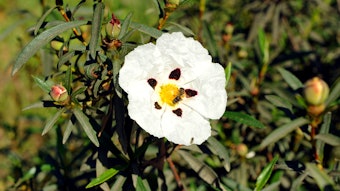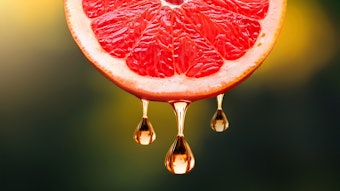Gas chromatography with mass spectrometry detection (GC/MS) has been the method of choice for identifying fragrance chemicals in natural products. Gas chromatography is the tool for separating the numerous fragrance chemicals once they are extracted from floral scents, while mass spectrometry is used to identify the structures of the chemicals, usually by matching the mass spectrum of an eluting chromatographic peak with the mass spectra in an electronic database library. The challenge facing the analytical fragrance chemist is how to extract a representative profile of fragrance chemical that mimics the optimum aroma of the flower being studied.
How and when the fragrance chemicals are extracted profoundly affects the chemical profile obtained. Chemists have learned that picked flowers can have an entirely different fragrance profile than growing flowers. Additional factors that determine the fragrance chemicals present include temperature, moisture and soil conditions, as well as the flower’s stage of life (i.e., its maturity). The time of day in which sampling is performed is also critical. Optimum sampling time normally occurs when the plant’s primary pollinator is most active. Floral scent analysis normally involves sampling at specific time intervals over a 24-h period to determine maximum levels of key fragrance chemicals. The peak olfactive moment is defined as the maximum scent emission. The composition of aroma chemicals present at the peak olfactive moment is determined and is then the basis for formulating the reconstituted fragrance. Understanding the biorhythm of the particular flower being studied is fundamental to determining the peak olfactive moment and is critical to the successful artificial synthesis of the desired floral scent.
To accurately reconstitute the scent of a flower, it is necessary to capture, analyze and identify the most significant aroma-contributing chemicals that are present at the peak olfactive moment.
Other topics discussed: Methods Used to Isolate Floral Scent Chemicals, Dynamic Headspace Extraction, Solid-phase Microextraction (SPME), Zenith Trap, Advantages and Disadvantages of Various Extraction Techniques, Comparison of Tenax and PDMS Foam Trapping, Instrumentation and Instrumental Conditions, Advantages of GC-TOFMS, Conclusion










